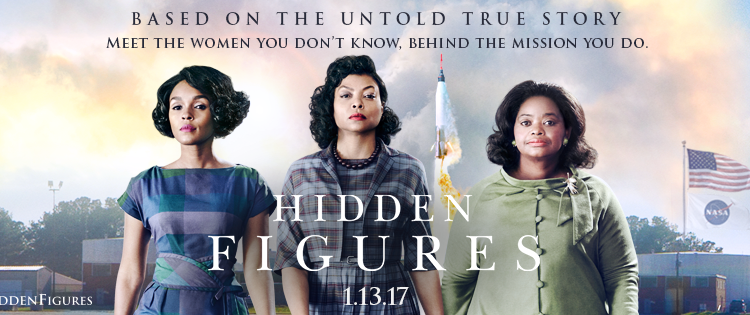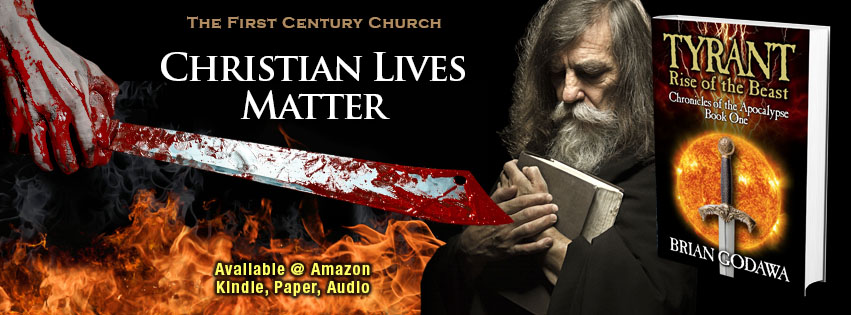
The true story of the positive influence that African-American women had on the success of the early years of NASA’s space program.
WOW. Watching this movie made me tear up with hope over the heroic dignity of its characters more than I have in a long time. (Well, actually, Hacksaw Ridge moved me as much, but before that, not in a while).
We follow the stories of three particularly brilliant young black women: Katherine Johnson, played with graceful fortitude by Taraji Henson; Dorothy Vaughn, portrayed with courageous strength by Octavia Spencer; and Mary Jackson, played with witty womanliness by Janell Monae.
The three are friends whose mathematical intelligence is each off the charts, but whose status as black women in 1950s America does not afford them much opportunity for advancement or success, as they face the prejudices of a society that still needs change in its treatment of women and the black community.
As the women go to work at NASA, we see them face the everyday prejudice of segregated “colored” water fountains, bathrooms and schools. But also, they suffer under the compounded factor of women in a male-dominated workforce, where they just don’t have the respect they deserve. The title of the movie, being a clever double meaning of how these women, along with many others, were “hidden” in the background of the achievement of America because of social prejudice.
But this isn’t a propaganda film of the SJW grievance industry. Quite the opposite…
All men in this story aren’t misogynists and all whites aren’t racists. In fact, it’s those white men who end up taking stands on behalf of the women because of the recognition of their excellence of performance, not the demand of entitlement and white guilt. Equality before the law, as it was intended to be, not equality of outcomes as it was revised to be.
It’s full of moments of “little heroism” that make you choke up with real hope in the goodness potential of our fellow human beings. From Kevin Costner’s department head, Al Harrison, who doesn’t see race or gender (remember when that was the goal? You know, MLK kind of colorblind elevation, not BLM kind of color-obsessed hate and violence), to astronaut John Glenn, who in one of the most moving moments of the film, tells Harrison he will only go through with the launch if the math numbers are approved by Katherine. It sends chills down my spine as I remember it and write it about it even now. What beauty of humanity, what grace of transcendence.
This movie is inspirational but also morally educational. It shows a different era and a different set of ethics than we have today. It shows a time with real racial and sexual prejudice, not merely perceived or socially constructed ones. But it also shows a higher ethic of how to deal with such problems than we do today. A higher ethic of overcoming prejudice through noble and dignified means rather than the violence and hate we have seen brewing in the cauldron of the new grievance mongering cry-bullies.
The women in this story are no pushovers, no black June Cleavers. They don’t deny injustice, they face it with dignity and honor. They had more difficult lives than many today with single motherhood and financial disadvantage, with true racial marginalization.
But what stands out to the viewer is the beauty and grace through which they face their opposition and achieve their deserved greatness. And I don’t mean physical beauty, but beauty as a peaceful harmony and gracious manner.
In this movie, we see heroines who face authorities and bullies with respectfulness not lawlessness and anarchy like today.
In this movie, the characters are winsome instead of divisive like today. They appeal to the better angels of their opponent’s natures, rather than attack them with absurd accusations of politically constructed “phobias”…
We see women who, in the face of workplace disadvantage, rise above through perseverance and peaceful hard work ethics, not riots and violence…
We see black folk who earn respect through gracious patience and reasoning, not victimhood, race-baiting and reverse racism…
We see minorities who want to be a part of the greatness of America, not the hatred of America. Epluribus unum, not multiculturalism.
There is one point in the film where Mary’s husband spouts the leftist activist nonsense of today about seeing themselves as the oppressed under the oppressor, and she rejects it, proving herself with excellence above reproach and a well reasoned legal argument.
These women outperform their enemies, not outhate them. They say success is the best revenge, but it’s also the best equalizer.
This movie shows African-Americans overcoming the odds of prejudice with grace and beauty, not hatred and violence. And really, that’s the only moral way to overcome with lasting change.
Quite frankly, this is a movie where I cannot help but ask, “How did this ever get made in Hollywood, the leftist mecca of politics and victimology?” Alas, I still believe in miracles. And Hidden Figures is one of those wonderful, heartfelt and heroic miracles.
Though Hacksaw Ridge deserves best picture of the year, all three of these women engaged in Oscar worthy performances and the writing made the most boring subject in the world for a movie—math—into a fascinating storyline of gripping human drama.
Hidden Figures is beautiful, gracious, transcendent and excellent. And that is how you win over prejudice.

